Moonstone Read online
Page 2
One of the boys from the engineers’ college shows his companions a ring he is wearing on the little finger of his left hand: a silver ring with a black stone. It is a gift from his sister, who has today returned from Denmark after six months’ training in home economics at the smørrebrød school in Odense. The youth holds up the ring to catch the glow of the gaslight by the hotel entrance, and his friends duly admire it. He kisses the black stone: Sis really is the best! What a pity she couldn’t come along this evening, but she’s feeling a bit out of sorts after the voyage.
The cathedral bell tolls nine.
The group of friends is drawn into Hotel Iceland.
The boy dashes across the square: the projectionist at the Old Cinema is as punctual as the sun.
vi
—Moonstone …
The boy makes a puzzled sound. The man points at him:
—Your name, Máni Steinn, Moonstone …
He repeats the word, mimicking the man’s pronunciation:
—Mún-stón …
The man nods gravely.
—Yes, you are …
The boy translates the words in his head: “Yes, you are.” Is English such a simple language, then, that it fits Icelandic word for word? Perhaps he could learn it like that, beginning with the words that are exactly the same, if he repeats them often enough?
He points at the man.
—Yú neim …
The man laughs.
—Is none of your business …
Turning serious again, he runs his fingers through the boy’s dark-red hair.
—Auburn moon, harvest moon …
This requires more effort in language learning than the boy can be bothered to make. Yet, unable to resist the temptation, he repeats:
—Óborn mún, nonn off yor bisniss …
Smiling at the man, he seizes his hand and removes it from his head to place it between his legs. They are under the covers in the man’s bed in Hotel Iceland.
The man turns away from the boy, pressing against his hot body and guiding the boy’s hard member inside himself.
* * *
Spring turns to Autumn over night
In Flanders field,
Before its time the corn is cut,
Your auburn hair,
A harvest meal by ravens pluck’d.
—From Billy by Anonymous (1915)
* * *
After the Fatty short was over, the boy had wandered around the center of town, ending up by the illuminated window of Café Skjaldbreid.
A foreigner was sitting at a table inside, reading a book through a pair of pince-nez. He was about thirty, and the boy was intrigued by his fair waxed mustache and wavy hair. After a few minutes, the man sensed that he was being watched. Lowering his book, he glanced around. When finally he caught sight of the boy’s face in the window, he turned chalk-white and leaped to his feet.
The boy waited for him outside in the dark street, his back to the café, and let the man come right up to him before he turned. The man held out a shaking hand as if he couldn’t believe the boy was of this world.
—Billy?
* * *
After the boy had crawled in through the window of his hotel room and they had begun to take off their clothes, the man unfastened the artificial leg made of hardwood that was attached with a leather harness to his right thigh.
The boy had never seen such a device before and examined the leg from every angle until the man took it away from him and hung it from the foot of the bed. He drew Máni Steinn under the covers to join him:
—Moonstone …
III
(October 31–November 1, 1918)
vii
Almost all anyone in Reykjavík can talk about these days is the “Spanish flu,” which, it is now believed, was carried to the country on the steamship Botnia.
Cables from Copenhagen report that the pestilence is raging there with devastating virulence; comparisons are being made with the cholera epidemic that ravaged the city in 1853. At the same time, articles appear in the Reykjavík papers with statements by respected Danish physicians claiming that the symptoms of the disease are no more serious than might be expected from common influenza, and that there is no cause to resort to drastic and costly preventative measures, since the mortality rate must be regarded as within acceptable limits. Endorsing this policy, the Icelandic Board of Health merely urges the public to take precautions similar to those they would take for the seasonal grippe that does the rounds every year. Other voices are heard saying that no notice should be taken of the bleating of the Dane, since he is made of different stuff from the Icelanders—those proud descendants of the Viking warrior Egill Skallagrímsson.
But with every day that passes without government action, more of the townspeople are struck down with symptoms just like those described in the news from Denmark as afflicting the lesser race. These include painful pneumonia, physical prostration, nervous depression, and fever.
The boy has heard the old lady reading these things aloud to herself from copies of Morgunbladid, which she receives gratis at the end of every week when their landlord downstairs has finished with them. For such skill had she brought to wiping this man’s bottom in his infancy that, once her working days were over, he had invited her to live in his attic rent-free. Later, when she was asked to take in the boy, the landlord had made no objection to his living with her. And this despite the fact the blessed man is a socialist—and all his folk, as the old lady exclaims every time the family downstairs does her a kindness.
The boy has learned in addition that at number 5 Raudarárstígur there is a used cooking stove for sale; that Mrs. Harlyk is to lead a meeting of the Salvation Army; that a marriage has taken place between the painter Fridrik E. Borgfjörd and Ólöf Bjarnadóttir of Lambastadir; that such Danish foodstuffs as appetitsild, ansjoser, and sardiner are available from Einar Árnason’s stores; that a purse has been lost and a silver brooch found, because the old lady enunciates every last word that is printed in the papers.
He is grateful for the old lady’s noisy delight in reading; were it not for her, he wouldn’t know the first thing about home or world affairs, since he himself is so illiterate—the letters of the alphabet disguise themselves before his eyes, glide between lines, switch roles in the middle of a word, and might as well be a red code to which he does not have the key—that he can barely struggle through the programs and title cards at the cinema.
Although, as a rule, little in the papers captures his interest—anything that happens in Iceland seems too small, while overseas events affect him only if they are grand enough to be made into films—the news in the last few days about the Spanish flu has held a lurid fascination for the boy:
He has a butterfly in his stomach, similar to those he experiences when he picks up a gentleman, only this time it is larger, its wingspan greater, its color as black as the velvet ribbons on a hearse.
An uncontrollable force has been unleashed in the country; something historic is taking place in Reykjavík at the same time as it is happening in the outside world.
The silver screen has torn and a draft is blowing between the worlds.
* * *
“But where is Sóla G—?”
The boy has not seen her for nineteen days, not since that night on Öskjuhlíd.
viii
The fires of Katla are dying down, but the plume of ash can still be glimpsed on the horizon when the cloud cover permits. This morning the citizens of Reykjavík awoke to find a layer of ash covering their windowpanes. At ten o’clock it was still so dark in the bedrooms of the town that one would have thought it was the middle of the night. Many have risen late as a result, and people are still coming to terms with reality when the boy gets up at midday.
He performs his habitual circuit of the town, checking which films are to be shown that evening—The Spoilers at the New Cinema, Hearts in Exile at the Old—then buys himself some curds at the Fjallkonan restaurant and pe
ruses the picture papers at S. Jón’s Bookshop. But today this is merely a pretext.
The boy invariably arranges his route so it passes the house belonging to the parents of Sóla G—. There is no movement inside. He is relieved. She cannot be lying ill indoors.
It begins to rain. The ash runs in gray streams down the walls, cascading into the street. It is sticky underfoot.
* * *
—Were you giving me the eye at the bathhouse yesterday?
—So what if I was?
—I thought maybe you wanted me to drop by.
—Maybe I did.
—Well, here I am.
The boy is standing in the yard behind the Á.C. photographic studio. The rain rattles on the corrugated-iron porch over the back entrance. The photographer leans against the doorpost, studying the boy, then says curtly:
—Come in.
Unusually, the photographer does not attempt to kiss him but only wants them to jerk each other off. They are quick to come. The photographer hands the boy three krónur:
—I’m afraid you won’t be as busy for a while, pal.
The boy shrugs and heads back out into the rain.
The photographer was one of his first gentlemen. It was from him that he acquired the photograph of Muggur. The picture shows the artist in a black suit, with bangs down to his eyes and a roguish smile on his lips. There is a cigarette in his hand, which he must have lowered the instant the shutter opened.
The movement of his arm is sketched in the air as if Muggur had made a brushstroke in time.
* * *
The boy’s next stop is the yard of the Reykjavík Automobile Association, where Sóla G— is permitted to tinker with her motorcycle in return for helping to clean the taxicabs. He hovers at a discreet distance from the workshop, watching the vehicles come and go. The drivers are used to lads hanging around and pay no attention to the boy, apart from one who winks at him. The boy ignores this but makes a mental note of the man’s face together with the noise of his engine.
The girl is not there and does not show her face during the hour or more that the boy waits.
* * *
Darkness begins to fall once more. The town ambulance speeds in the direction of Sudurgata. Beside the driver, a young woman in a wide-brimmed hat sits staring palely ahead.
The boy sets off home. He must eat his dinner so he can carry on his search for the girl.
He whistles a tune as he walks and smiles when he realizes where he heard it. The sound had wafted down from the upper floor into the storeroom of the photographic studio.
The names Peter and Pan float along with the melody.
Before Máni Steinn discovered Sóla G—, he had thought Muggur the fairest of them all.
ix
When the boy next sees Sóla G— she is among a gaggle of girls outside a house in Vonarstræti where dressmaking is taught and, it is rumored, women’s rights are discussed.
In this company she is dressed, like any other Reykjavík society girl, according to the latest fashion, in an English lady’s trench coat, a knitted hat in green and brown, and buttoned leather boots that disappear under the hem of her calf-length skirt. Compared with her motorcycle outfit, the boy has to admit this getup is disappointingly conventional.
But it’s all right. He knows that it’s in the nature of women like Sóla G— and Irma Vep, her French doppelgänger played by Musidora in The Vampires, to don a thousand disguises and be simultaneously “Everywoman” and “The One Woman”—even when dressed in suit and tie.
* * *
The Vampires (Les Vampires) is a seven-hour-long French film by Louis Feuillade. Over ten episodes it tells the story of the eponymous gang of nihilists who hold French society in the grip of fear. Under the leadership of their brilliant and ruthless master, the Grand Vampire, they have penetrated the highest echelons of society, corrupting everyone they can, intimidating and murdering all those they cannot.
Paris is in disarray, unpredictable and lethal. People are murdered in cafés and railway carriages, in the streets, in back rooms, and in their own bedrooms. Every other person is in disguise, name and social rank are no guarantee—the haute bourgeoisie cannot distinguish their own from members of the criminal gang—every pocket conceals a weapon, every closet a corpse; new mechanical inventions are used to commit elaborate crimes. In a city where reason is daily executed with its own weapons, nowhere is safe.
Foremost among the Vampires is the girl Irma Vep. Wearing a black costume that clings to the curves of her shapely figure, she scales buildings like a shadow and breaks into apartments and government offices before making her escape over the rooftops.
And all is achieved with the cheerful zeal of one who has turned her back on the laws of her fellow men.
O Irma Vep, queen of the cloud-veiled night!
* * *
The dressmaking group prepares to head home, with all the hugging and kissing that invariably attend womankind. The girls who live in the “gods,” the neighborhood of streets named for the old Norse pantheon, are to walk together south around the lake and up the hill; two of the others are going to cycle along the shore to the west end of town; while the rest plan to stroll arm in arm down to Lækjartorg Square to promenade a little before heading up Hverfisgata and home. But these plans are cut short when the sewing mistress appears on the steps and calls them over.
The girls turn cheerful faces toward her, but the woman’s grave expression soon spreads to their own. They hurry over and she beckons them back inside.
Sóla G— is last to mount the steps. It seems to the boy that just as the door is closing behind her, her glance falls on his hiding place.
* * *
There is only one topic of conversation at the New Cinema box office:
The youth from the engineers’ college infected by his sister—the smørrebrød lady who arrived with the Botnia—has died of the sickness.
IV
(November 5–6, 1918)
x
In the five days that have passed since the first influenza fatality, the cinemas have become ever quieter, yet the townspeople have stubbornly continued to attend. Especially the young, whose response to the fear of contagion is to cluster together while the adults stay at home. Besides, it is warmer in the cinemas than in most of their homes, now that the coal shortage and the high price of paraffin have begun to bite, and coziest of all packed into the seats farthest from the auditorium doors.
But as the flu takes its toll on the musicians—not only those whose livelihood it is to accompany the films but also the ones immediately recruited to fill their places on an assortment of the unlikeliest instruments—the silence grows.
By the time Miss Inga María Waagfjörd, guitar player and chanteuse, slumps unconscious from the piano stool during the second episode of The Golden Reel at the New Cinema, the epidemic has snatched away the last person in Reykjavík capable of picking out a tune.
The following evening there is an attempt at the Old Cinema to screen the Italian smuggling tale Anger without any musical accompaniment. It is a disaster.
It takes less than half an hour for the audience to lose interest in the events on screen. When the only sounds accompanying the pictures are the coughing and throat-clearing supplied by the cinemagoers themselves, together with those emanating from the projectionist’s booth—the growling of the motor that powers the projector and the whispering of the film as it unwinds from the top reel, is pulled through the light beam, and threads onto the lower with a slightly hoarser whisper—it becomes apparent just how silent these films really are.
The actors’ movements seem clumsy, the pace too slow for the melodramatic plot, and the cuts between scenes confusing. It makes no difference how brilliantly the great diva Francesca Bertini performs the role of Elena the mountain maid in this third installment of The Seven Deadly Sins, which she both produces and stars in—she cannot hold the audience’s attention; it would take more than that to compete with the si
lence and the reality beyond the timber walls.
In the quiet gloom, beneath the hissing, flickering light, members of the audience begin to murmur about the situation in the town. In an undertone at first, but soon at normal pitch. Others join in, and before long the screening has turned into a public meeting at which stories are swapped about the nature of the epidemic.
All are agreed that the information supplied by the surgeon general fails to convey the truth about the terrible symptoms of the disease, which are quite unlike any the townspeople have experienced before. The body temperature soars so fast, for example, that by the first or second day the patient is helpless with delirium—and then there is the bleeding.
The projectionist’s silhouette appears in the aperture.
The projector beam is switched off.
Lights come on in the wall lamps.
The young people glance around, and only now does it dawn on them how many members of the audience have been taken ill: every other face is chalk-white; lips are blue, foreheads glazed with sweat, nostrils red, eyes sunken and wet.
Silence falls on the gathering.
Moving cautiously, the cinemagoers begin to ease themselves out of the rows of seats, pick their way up the aisle, and vanish noiselessly from the hall.
The final picture show is over.
The boy had already left some time before.
xi
Reykjavík has undergone a transformation.
An ominous hush lies over the busiest, most bustling part of town. No hoofbeats, no rattling of cart wheels or rumble of automobiles, no roar of motorcycles or ringing of bicycle bells. No rasp of sawing from the carpenters’ workshops, or clanging from the forges, or slamming of warehouse doors. No gossiping voices of washerwomen on their way to the hot springs, no shouts of dockworkers unloading the ships, or cries of newspaper hawkers on the main street. No smell of fresh bread from the bakeries, or waft of roasting meat from the restaurants.
The doors of the shops neither open nor close—no one goes in, no one comes out—no one hurries home from work or goes to work at all.

 The Blue Fox: A Novel
The Blue Fox: A Novel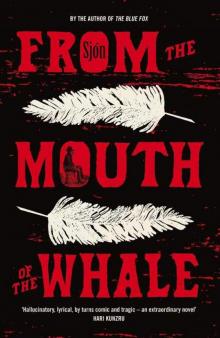 From the Mouth of the Whale
From the Mouth of the Whale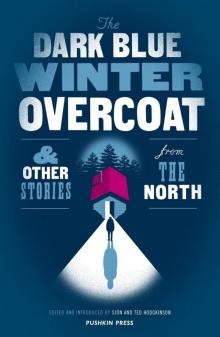 The Dark Blue Winter Overcoat and Other Stories from the North
The Dark Blue Winter Overcoat and Other Stories from the North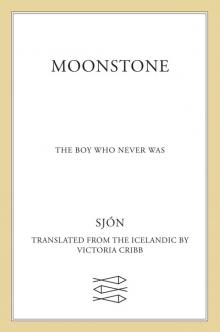 Moonstone
Moonstone CoDex 1962
CoDex 1962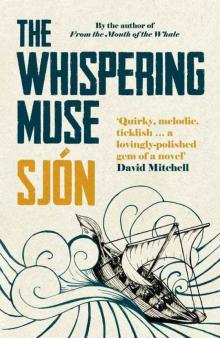 The Whispering Muse: A Novel
The Whispering Muse: A Novel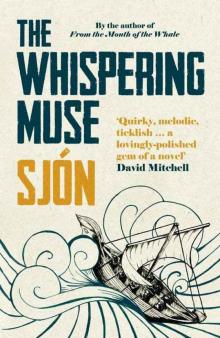 The Whispering Muse
The Whispering Muse The Blue Fox
The Blue Fox